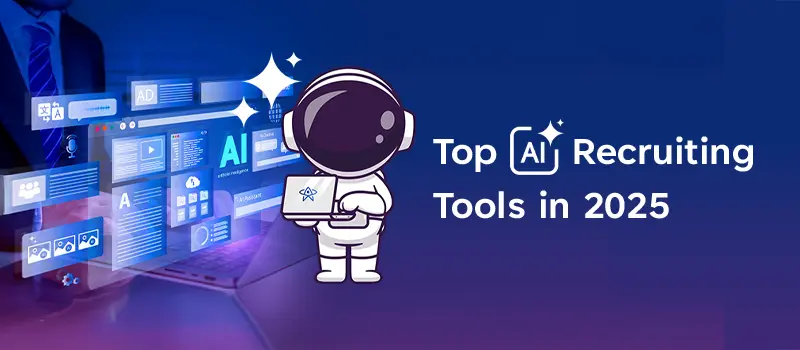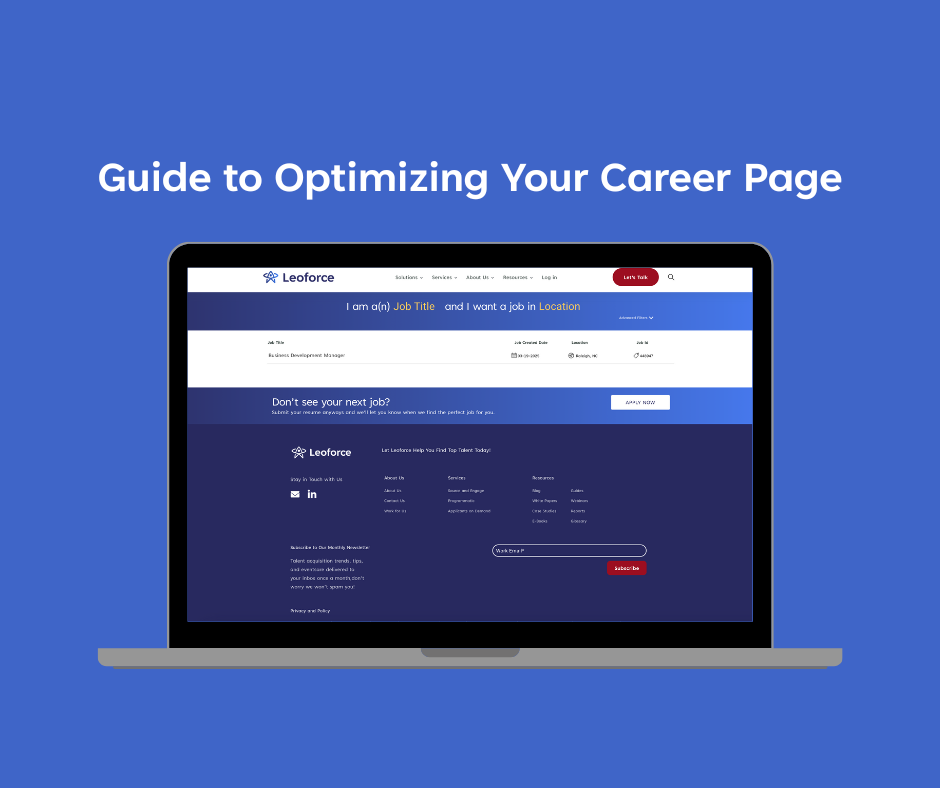Leveraging AI in recruitment to identify the potential in non-traditional candidates

The world of recruiting is being revolutionized by AI and this evolving landscape is enabling companies to achieve greater diversity and inclusion in their hiring practices. Beyond enhancing the efficiency of talent identification, AI technology is also helping job seekers experience a more personalized and streamlined process during the search for employment.
Furthermore, AI has effectively reshaped the way recruiters search for candidates as now, recruiters can proactively uncover high-potential candidates beyond the confines of job boards and their traditional sources. This expanded reach allows employers to discover a more diverse range of candidates who may have previously been overlooked for crucial roles in the organization.
AI-powered tools have helped facilitate the creation of personalized job postings where recruiters can tailor job descriptions to align with the specific needs of the company and the role in question. This customized approach attracts more qualified candidates and ensures that individuals with the right skills and qualifications are attracted to the job posting. They are further supported in mitigating unfair selection practices in recruitment by Applicant Tracking Systems (ATS) that can parse resumes and evaluate candidates solely based on their skills and experiences. This removes the human potential of biases and ensures that qualifications are objectively assessed. Through the process, recruiters are also able to get valuable feedback, that in turn help them to eliminate conscious or unconscious biases when evaluating candidates, manually.
The rapid use of AI-enabled tools and technologies today, is helping organizations foster a more diverse candidate pool and at the same time, is helping them avoid issues and challenges that lays the foundation of a strong DE&I practice in the workplace. When employed, these tools can be crucial in identifying potential candidates from underrepresented groups and ensuring that all qualified individuals are considered for a position, irrespective of their background or identity. By actively seeking diversity through AI-driven processes, organizations can build more inclusive teams and promote equal opportunities.
However, organizations do face a coexisting challenge of a token diversity and inclusion recruitment policy in the workplace. This becomes evident in recruitment, where a lack of the right kind of diversity and or inclusion can have a negative impact on what type of talent an organization is able to attract and retain. Human Resources (HR) and talent acquisition specialists can leverage AI in recruitment to effectively identify the potential in non-traditional candidates that augment their otherwise robust methodologies of attracting the right kind of talent. While there is a certified chance of finding the aptly skilled candidate, AI can still help expand those boundaries to source an out of the box style applicant for the role or roles in question. Here is a detailed explanation of each approach:
- Resume screening: AI-powered tools can analyze resumes and identify key qualifications, skills, and experiences by the utilization of natural language processing (NLP) techniques. AI algorithms extract relevant information from resumes, such as education, work experience, certifications, and skills and this in turn allows HR professionals to quickly filter through many resumes, saving time and effort. However, by training AI algorithms on successful non-traditional candidates, recruiters can develop models to recognize patterns and prioritize applicants who possess similar attributes as well as some unique aspects of their profiles that could bring something different to the role in question. This helps identify hidden potential that may be overlooked through manual screening.
- Job matching algorithms: AI is employed to match job requirements with candidate profiles, and it relies on predefined criteria, such as specific degrees or years of experience. However, non-traditional candidates often possess unique skills and experiences that are not captured by these criteria, because they are not programmed to do so. AI algorithms can be programmed to consider transferable skills, diverse experiences, and unique backgrounds that are unique to non-traditional candidates and are with a higher potential to excel in the role, even if they don’t meet conventional qualifications. By analyzing the job description and comparing it to candidate profiles beyond the predefined criteria, AI can suggest suitable matches, expanding the talent pool and allowing recruiters to tap into a broader range of potential candidates. By recognizing the value of diverse skills and experiences, modified AI-based job matching algorithms contribute to a more inclusive recruitment process beyond the norms of traditional selection.
- Skill assessments: Sometimes the hidden talents and capabilities may not be evident from traditional resume screening and that is where AI-driven platforms can focus on relevant competencies rather than relying solely on traditional credentials. By using AI algorithms to develop and administer assessments, recruiters can ensure consistency and fairness when they are evaluating candidates. When it comes to results, AI can be sued to analyze the results and identify potential candidates, even if their backgrounds differ from traditional applicants that are normally sought. By shifting the focus of AI from educational or other markers of pedigree to key skills, recruiters are able identify non-traditional candidates who may possess valuable talents that are not evident from their educational or professional backgrounds. This approach also aligns with D&I practices where the organization can show that it is valuing a broader range of characteristics and recognizes the potential in individuals with diverse skill sets.
- Video interviews and facial recognition: Facial recognition technology is widely used to identify and mitigate many kinds of human actions in travel, health, defence, and varied areas. This is done when AI is programmed to provide data points for analysis, allowing for a more holistic evaluation based on its capabilities to detect emotions, engagement levels, and other facial cues. This same technology can also provide insights into candidates’ emotional intelligence, adaptability, and suitability for certain roles, when leveraged appropriately. Human evaluation of traditional markers of emotional intelligence, body language etc., has not evolved in many decades since it’s use was widely popularised. However, when you augment this evaluator step with an AI-based video interviews, the platforms can assess any candidates’ responses, body language, and facial expressions that would be identifiably different for non-traditional candidates. Video interviews allow HR professionals to gain insights into candidates’ communication skills, problem-solving abilities, cultural fit, and other qualitative factors and the algorithms can analyze these interviews, automatically transcribe them, and extract relevant information for evaluation.
- Predictive analytics: The application of AI in resume screening, job matching, skill assessments, and interviews is qualified and quantified as data that needs proper interpretation. Recruiters can use AI to analyze large datasets and identify certain patterns related to non-traditional candidates as compared to those of successful traditional candidates. By examining historical data on candidate profiles, qualifications, and performance in similar roles, AI can help predict the potential of non-traditional candidates more accurately. Machine learning algorithms can identify correlations between certain characteristics and job performance, enabling HR professionals to make data-driven decisions. This approach helps mitigate biases and subjective judgments by focusing on objective indicators of success, rather than relying solely on subjective judgments based on statistical analysis. By embracing data-driven decision-making, along with other related practices that align with D&I practices, recruiters can ensure that hiring decisions are based not just on merit and performance, but also on the predictive elements of the unique skill sets that the non-traditional candidate brings to the role.
- Bias detection and mitigation: A task as simple as traditional resume screening often suffers from unconscious biases, leading to the exclusion of non-traditional candidates. Sometime, bias can inadvertently influence decision-making, leading to the exclusion of non-traditional candidates on cues that are very collectively driven in hiring practices. This is where AI algorithms can be incorporated to eliminate the bias. Systems can be designed to remove identifiable information from resumes, and they can use anonymized candidate data during the screening process. Algorithms can be made to focus solely on qualifications and skills, promoting a more inclusive evaluation of non-traditional candidates. By reducing the human bias and programmable bias in the early stages of recruitment, organizations can ensure that candidates are evaluated fairly and without bias based on their backgrounds.
It is important to note that while AI can assist in identifying potential in non-traditional candidates, human judgment and expertise are still crucial in making final decisions, as in the end the individuals hired must work in a collective of humans and not just technology. AI-generated insights should be interpreted by recruiters and HR professionals who can combine them with their experience and contextual understanding to ensure fair and comprehensive candidate assessments. AI should be viewed solely as a tool that enhances and supports the decision-making process, rather than replacing the expertise of the human in human resources or the talent involved in recruiting correctly. Overall, leveraging AI in the recruitment process allows HR and talent acquisition specialists to identify the potential in non-traditional applicants while also aligning and broadening the D&I scope and practices of organizations. By effectively using AI in recruitment, mitigating biases, expanding evaluation criteria, focusing on skills, and embracing data-driven decision-making, organizations can promote a more inclusive and equitable approach to talent acquisition as it provides opportunities for non-traditional candidates to showcase their abilities and potential, contributing to a more diverse and representative workforce.





